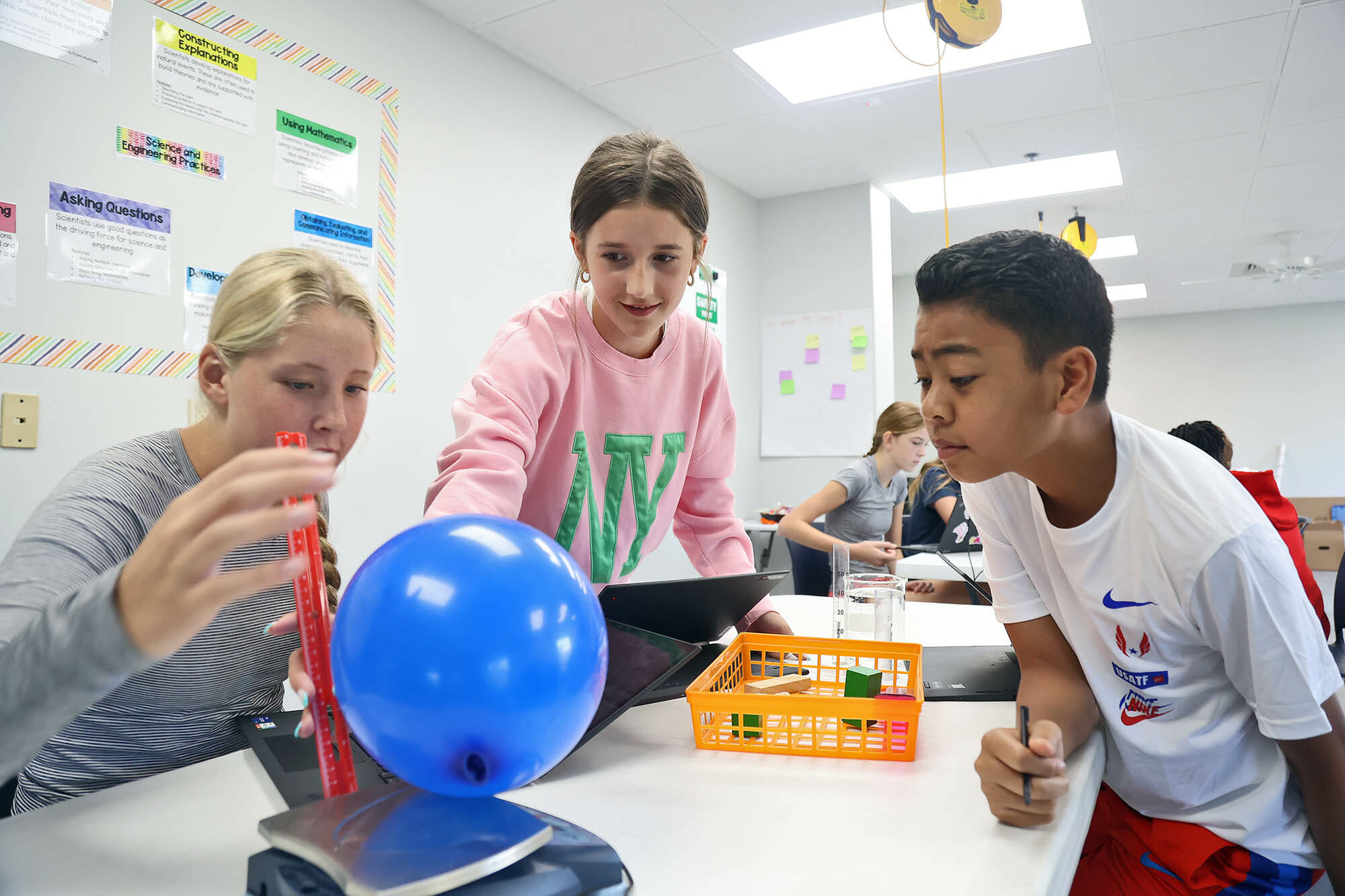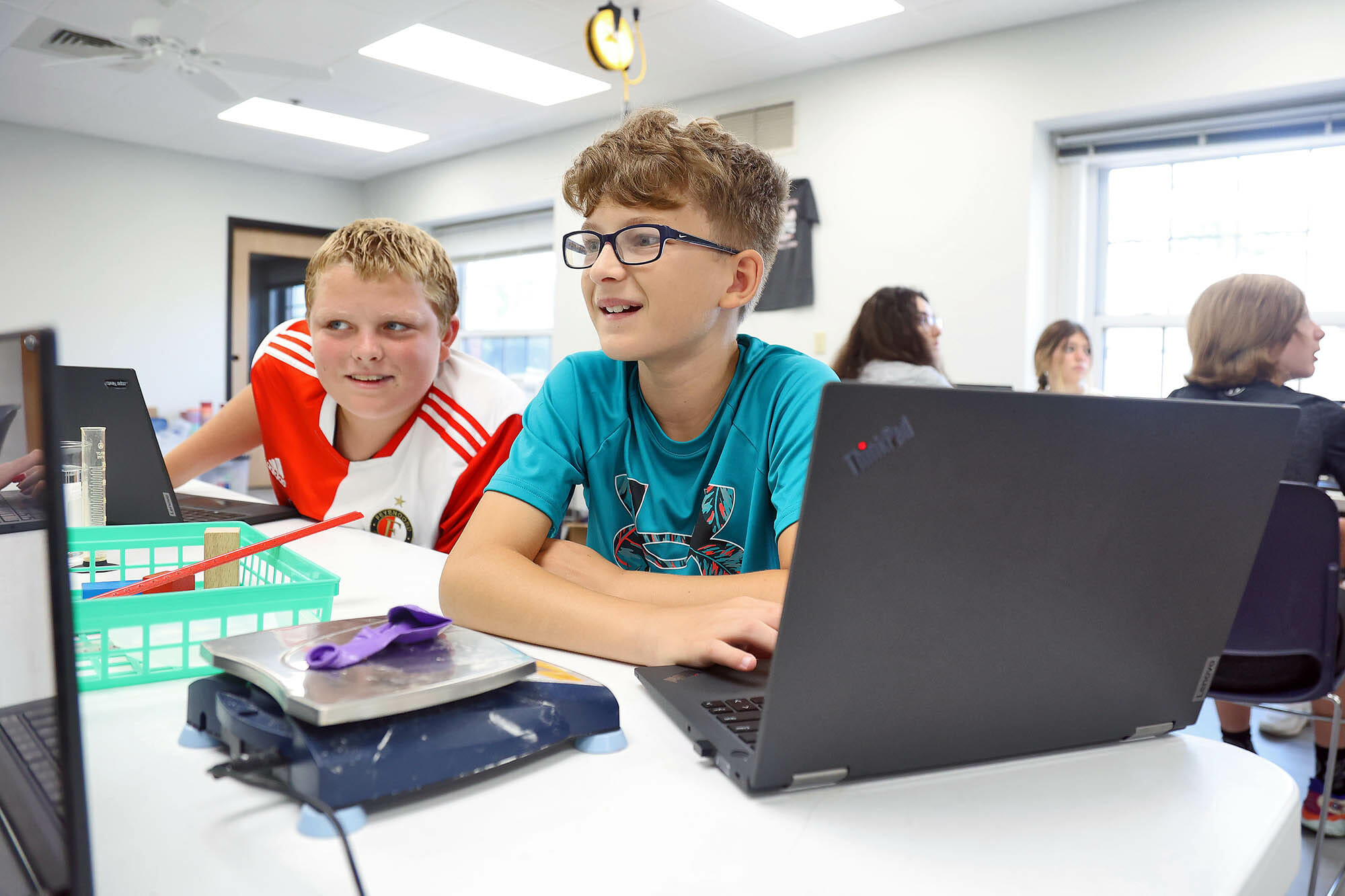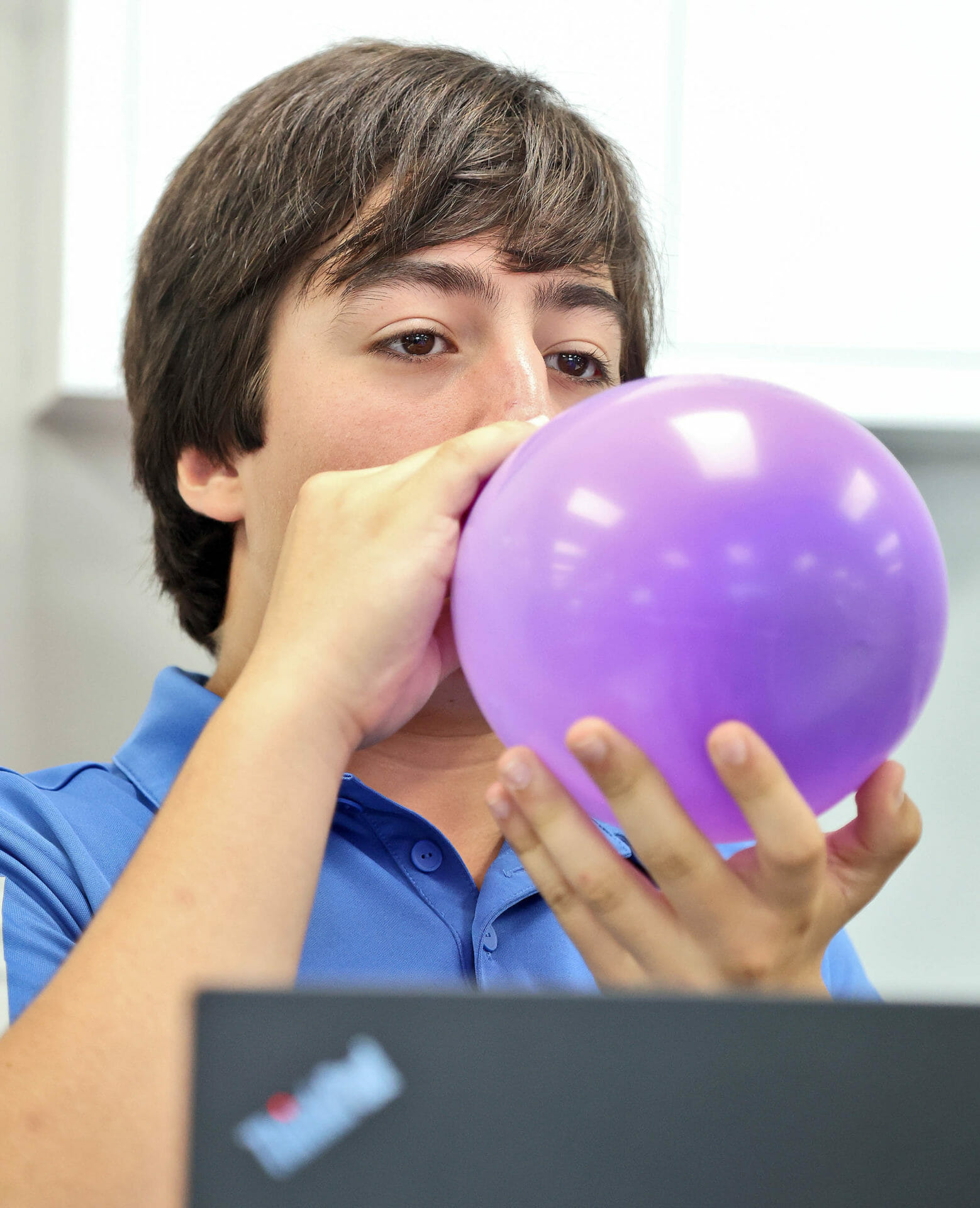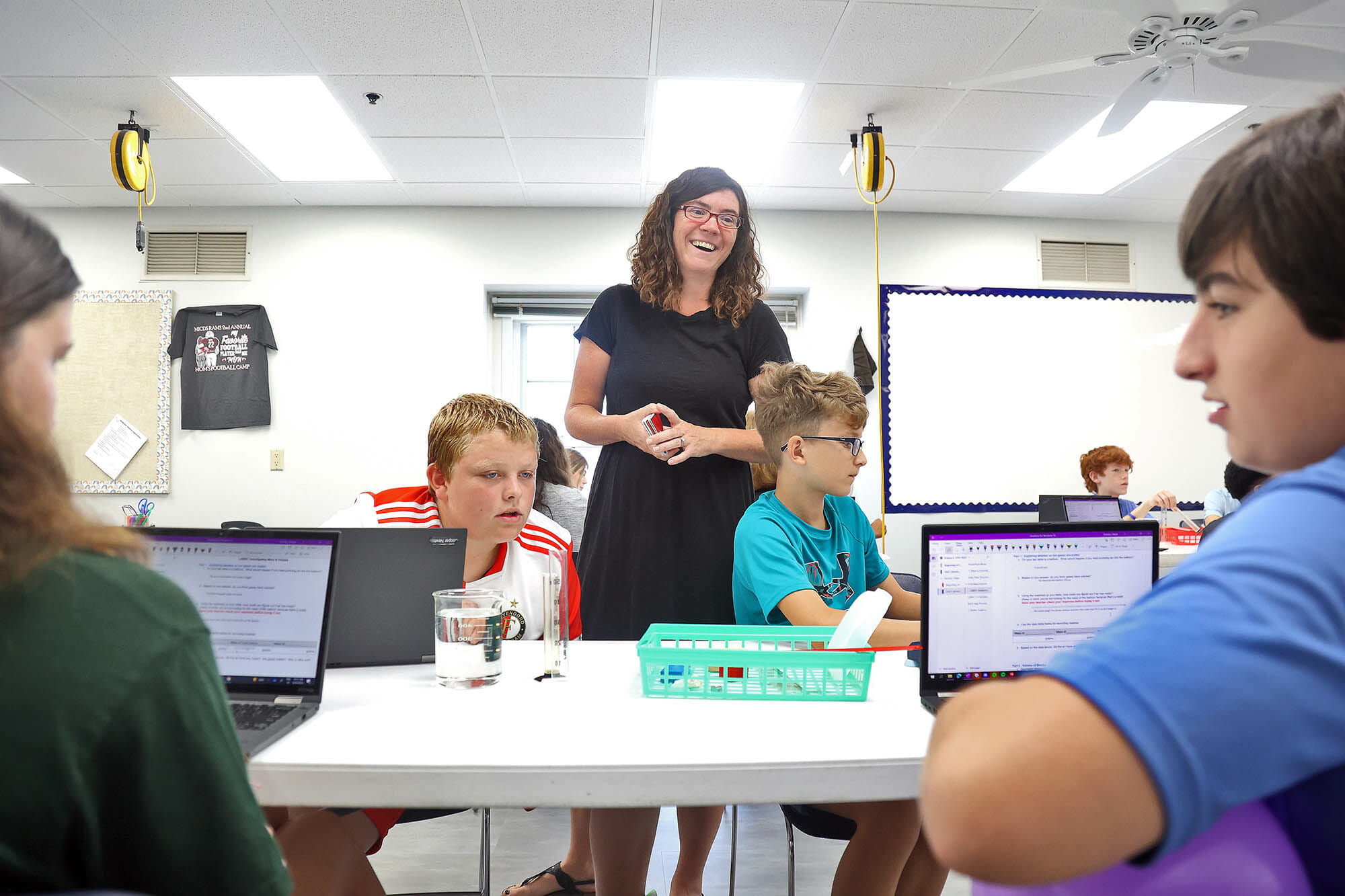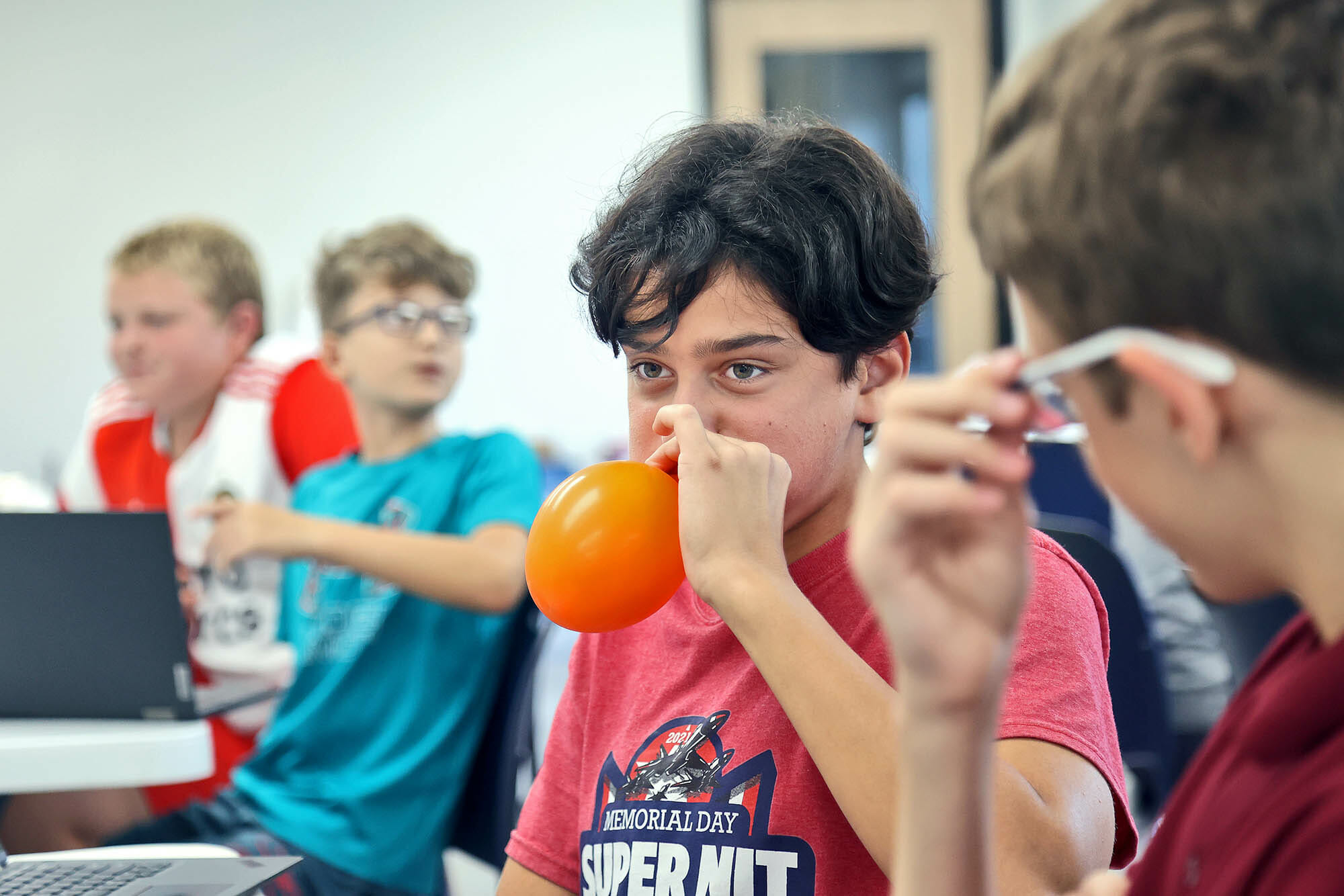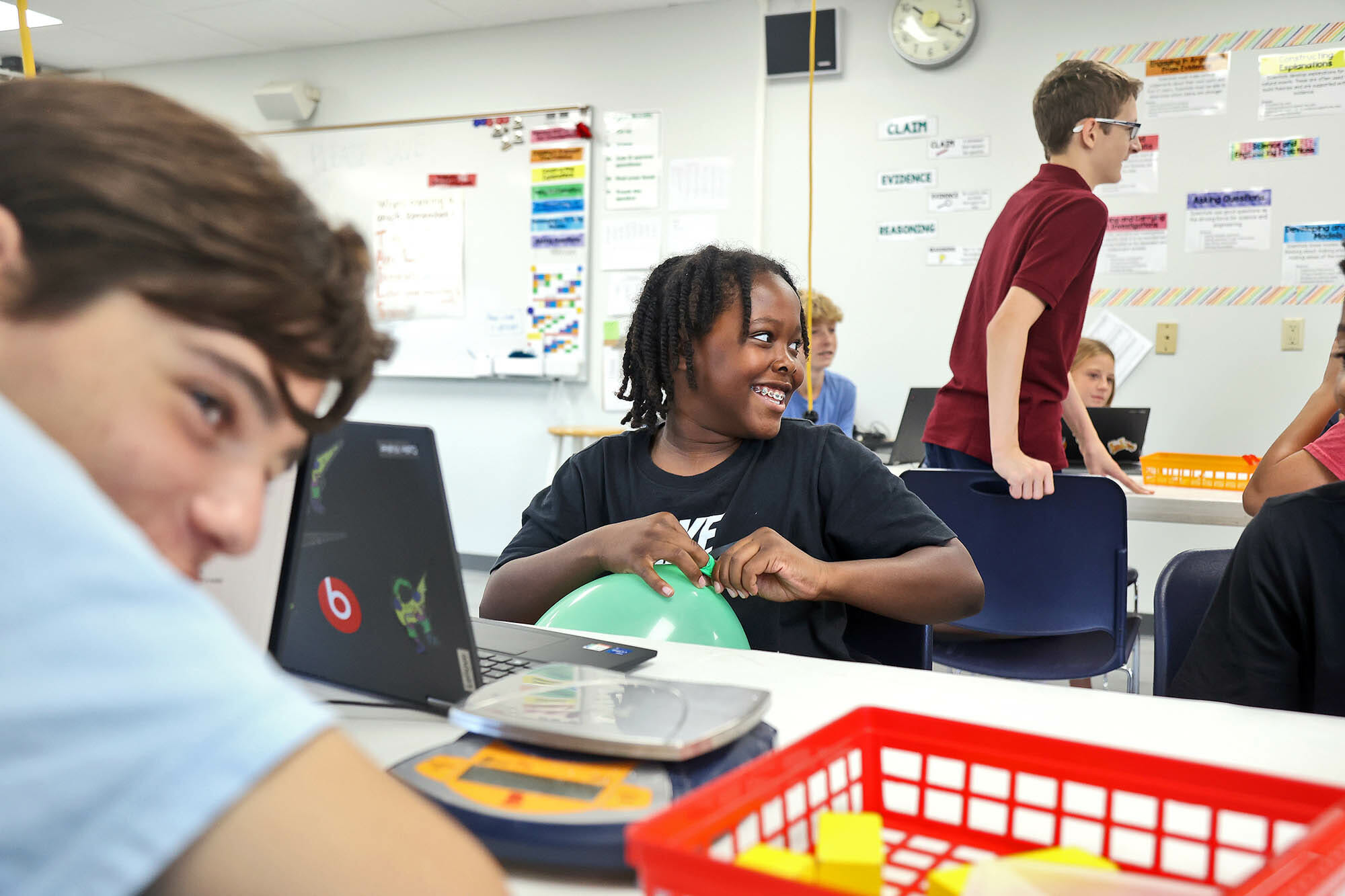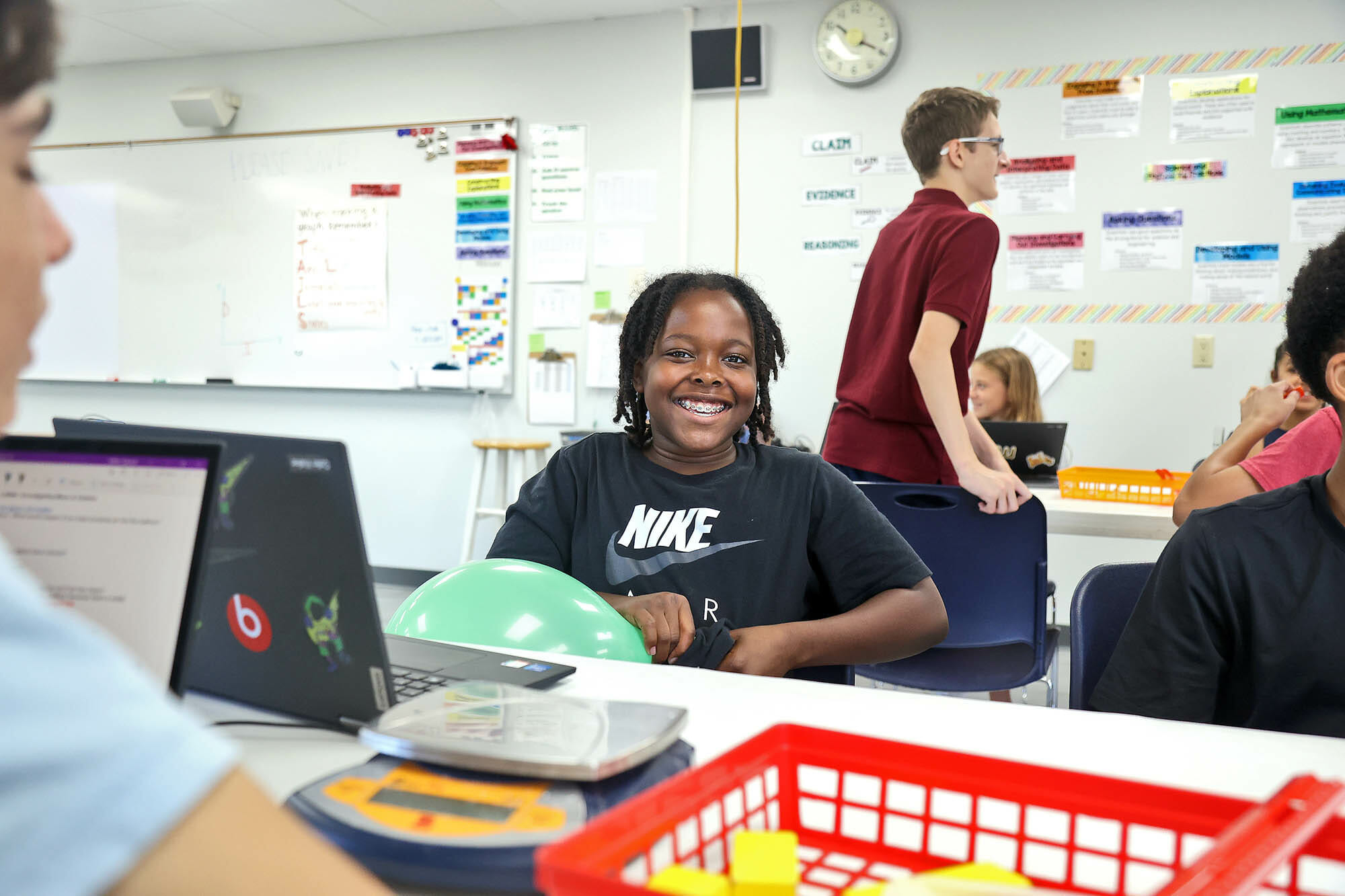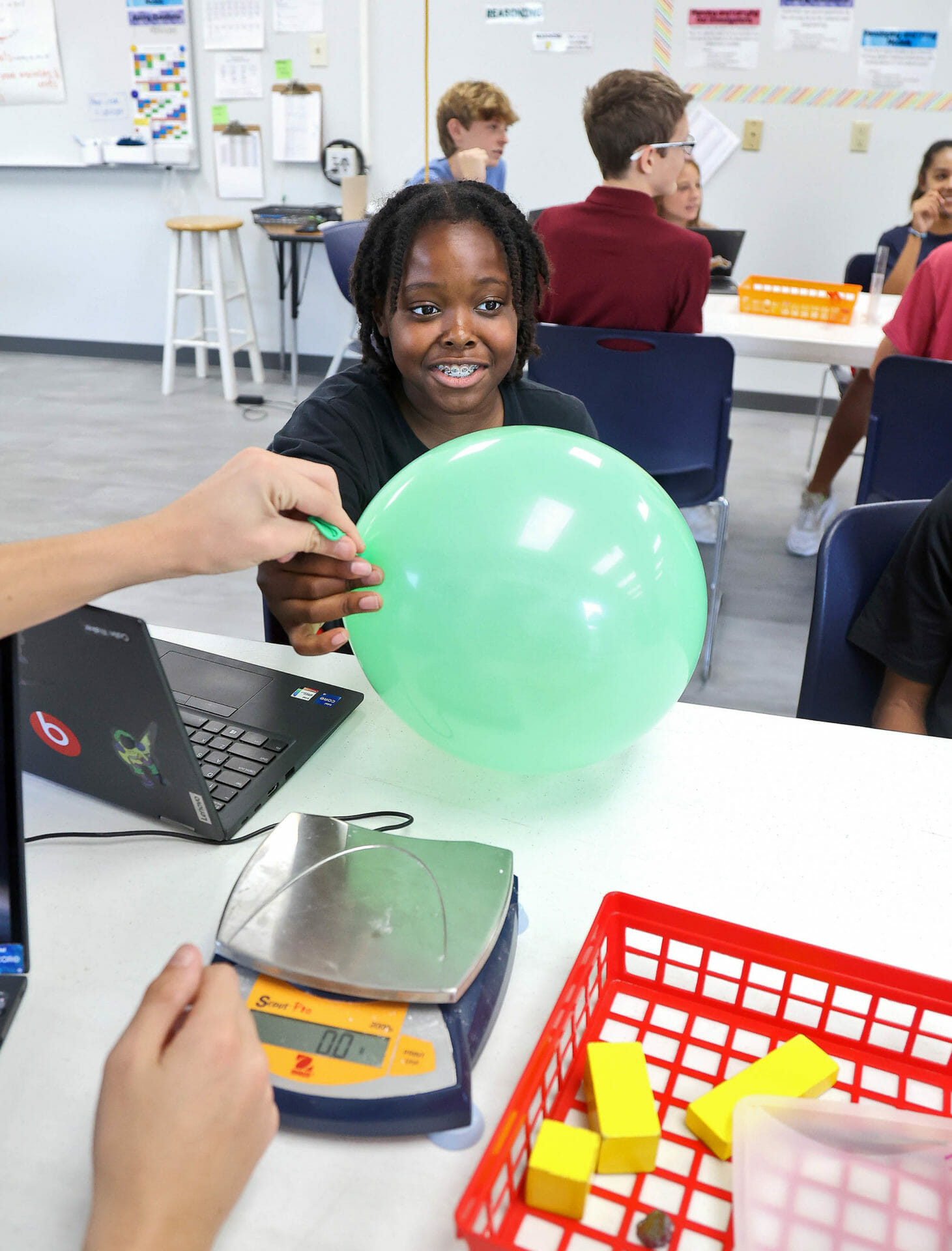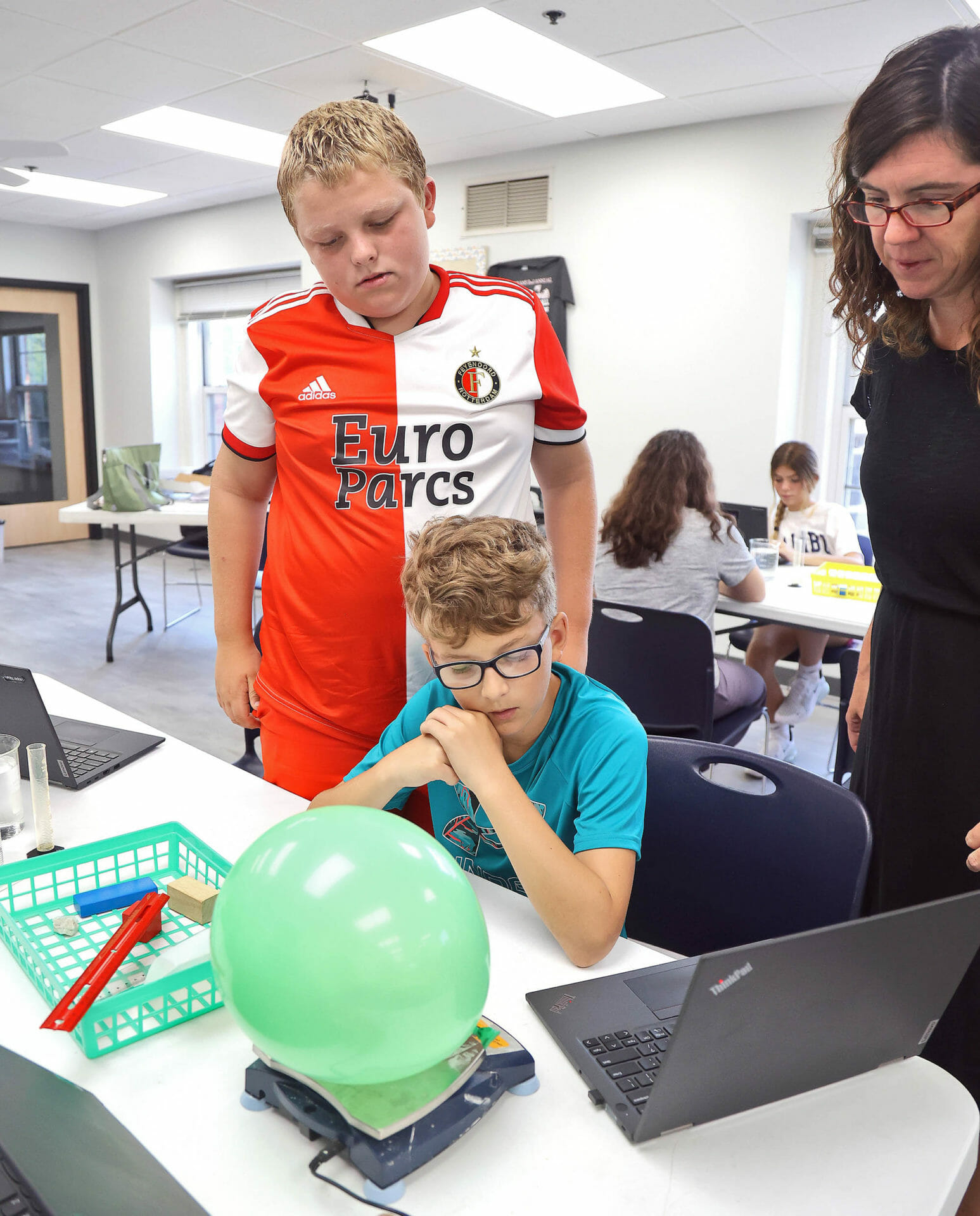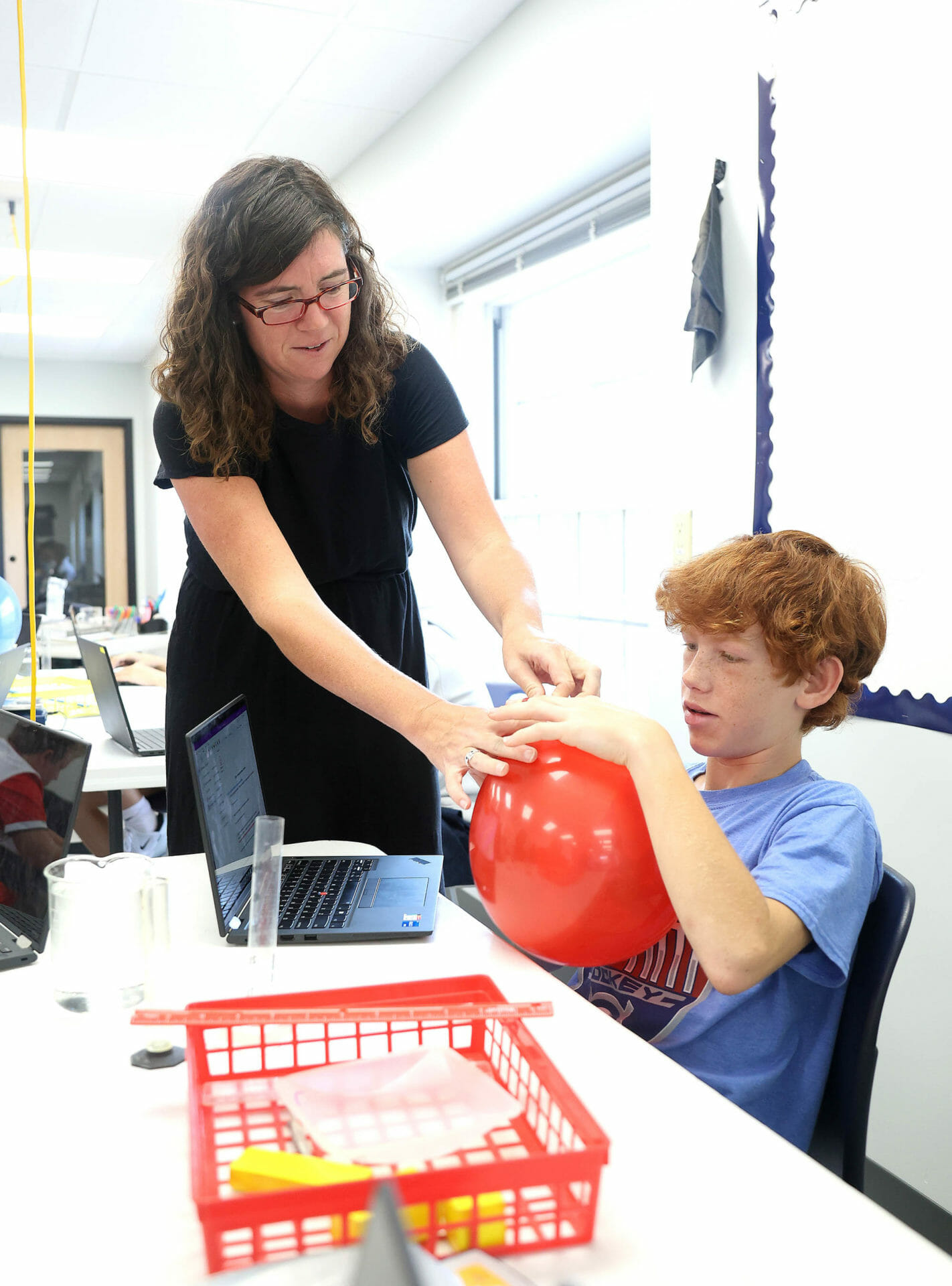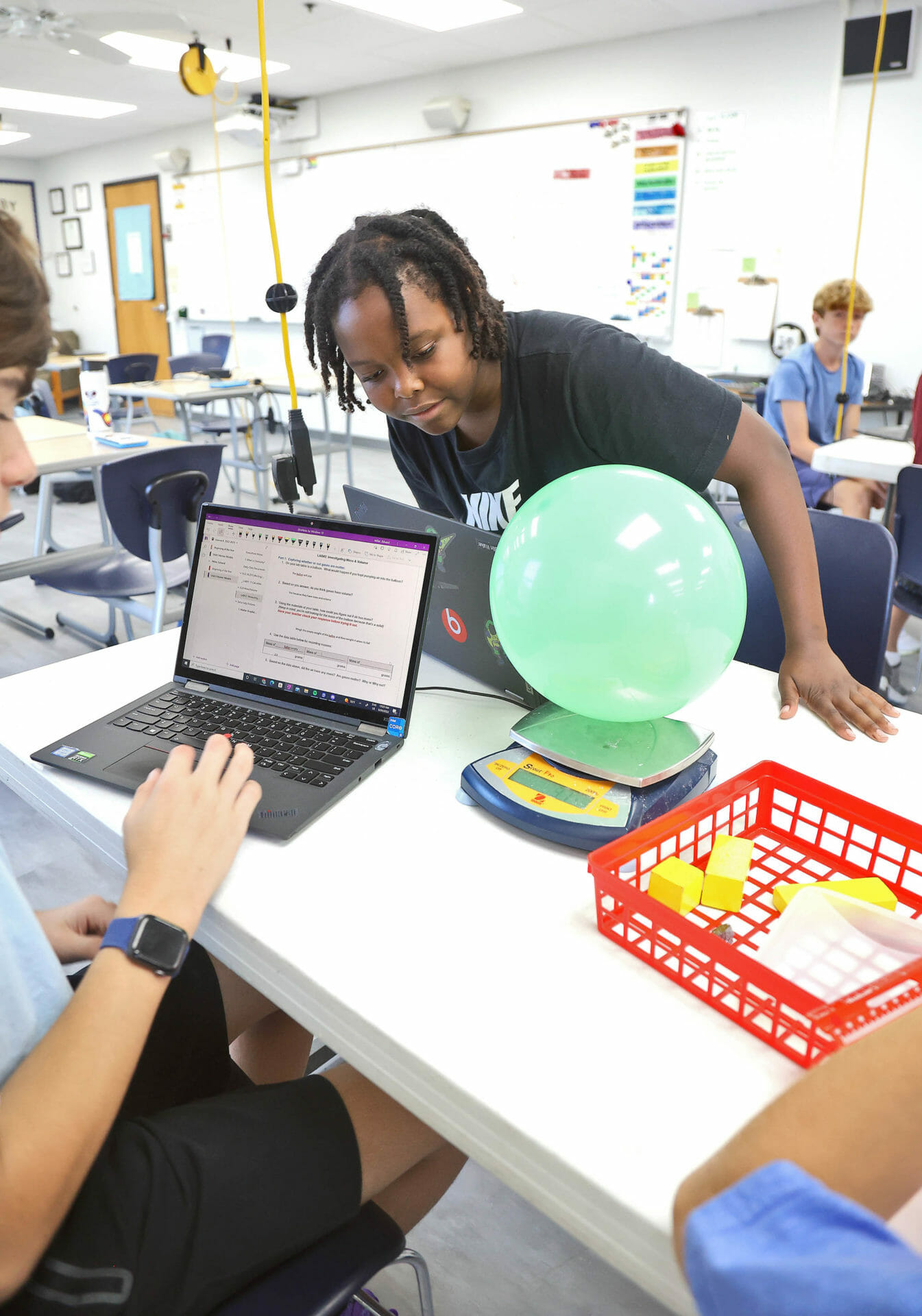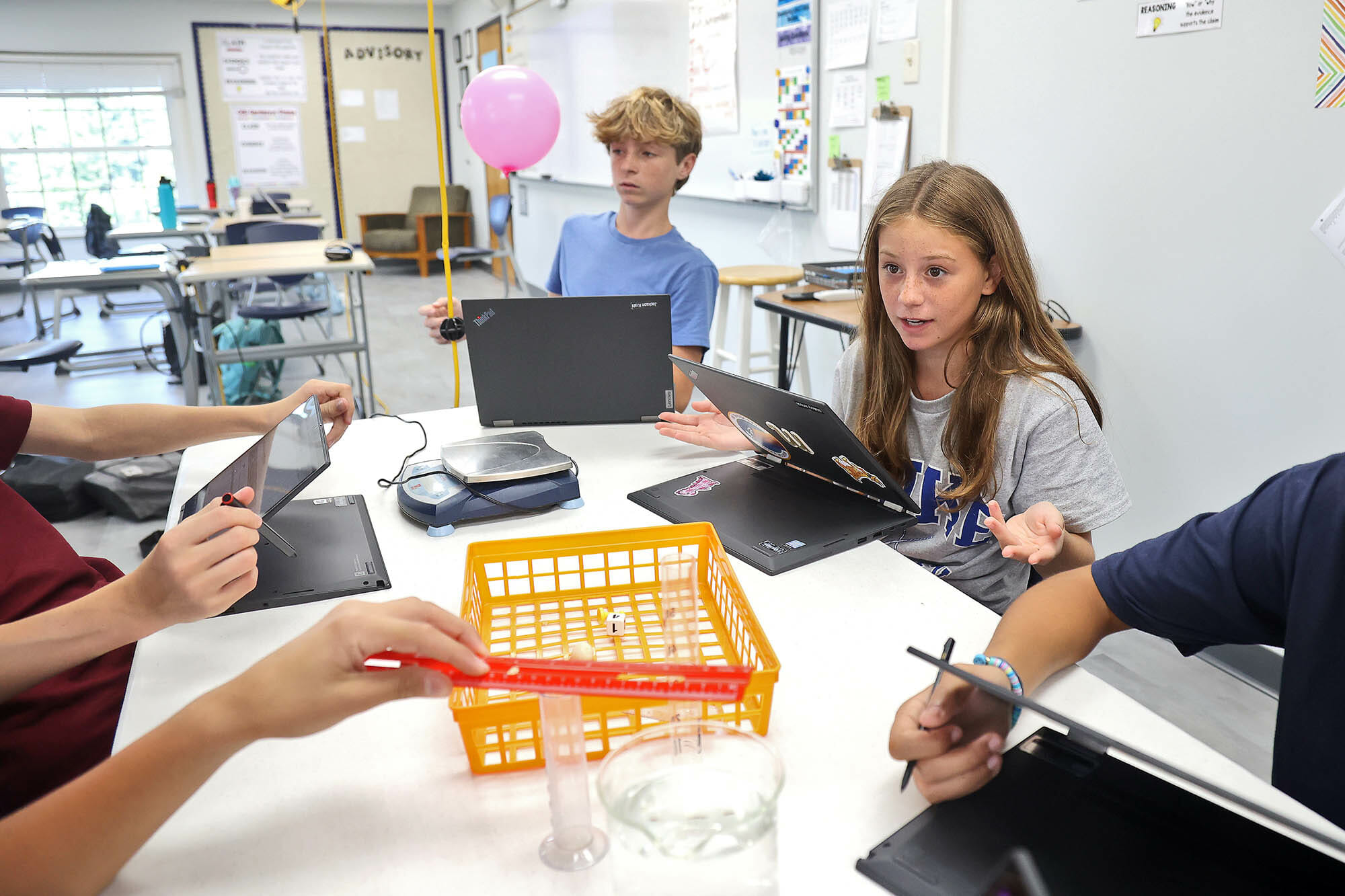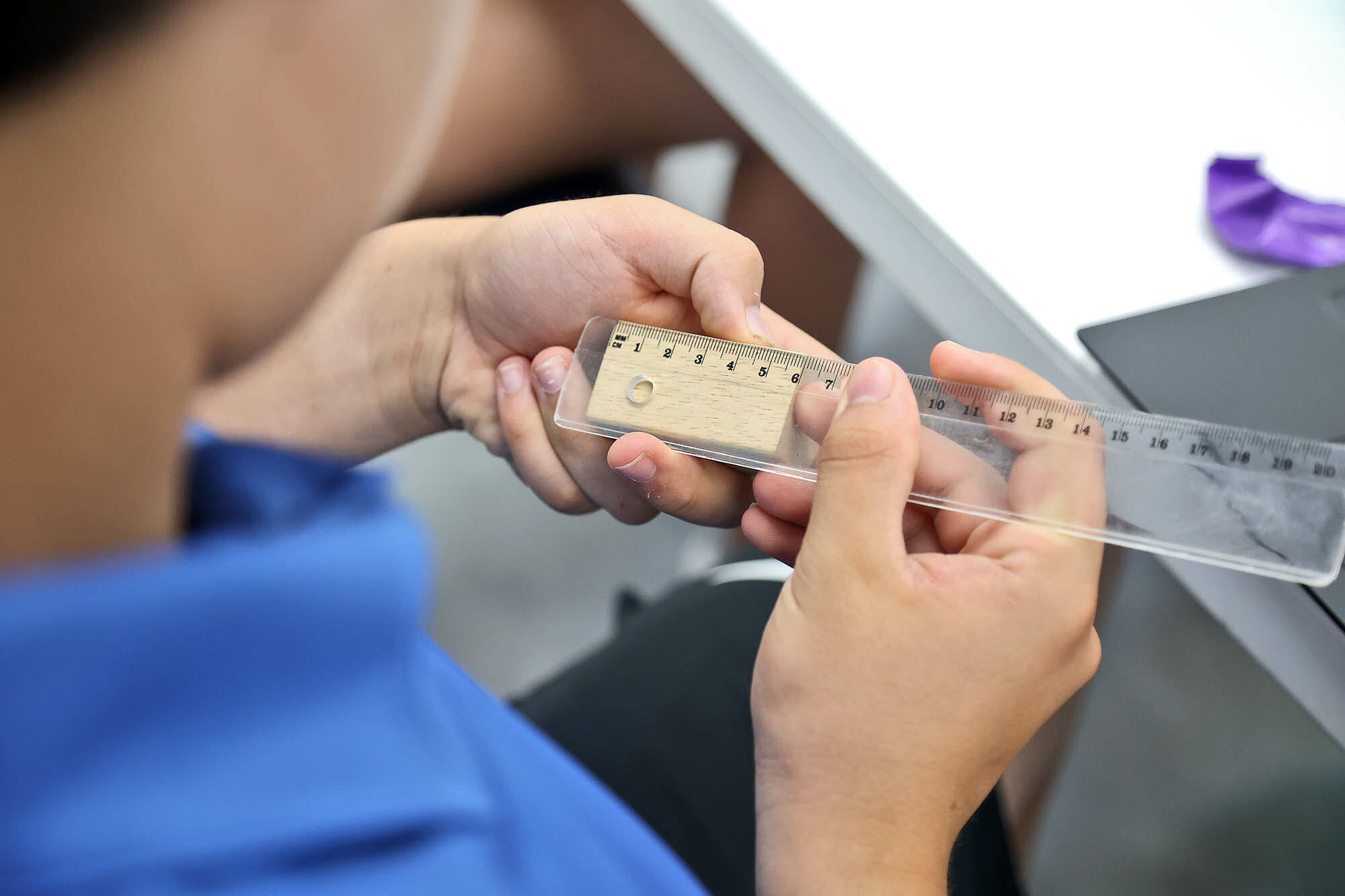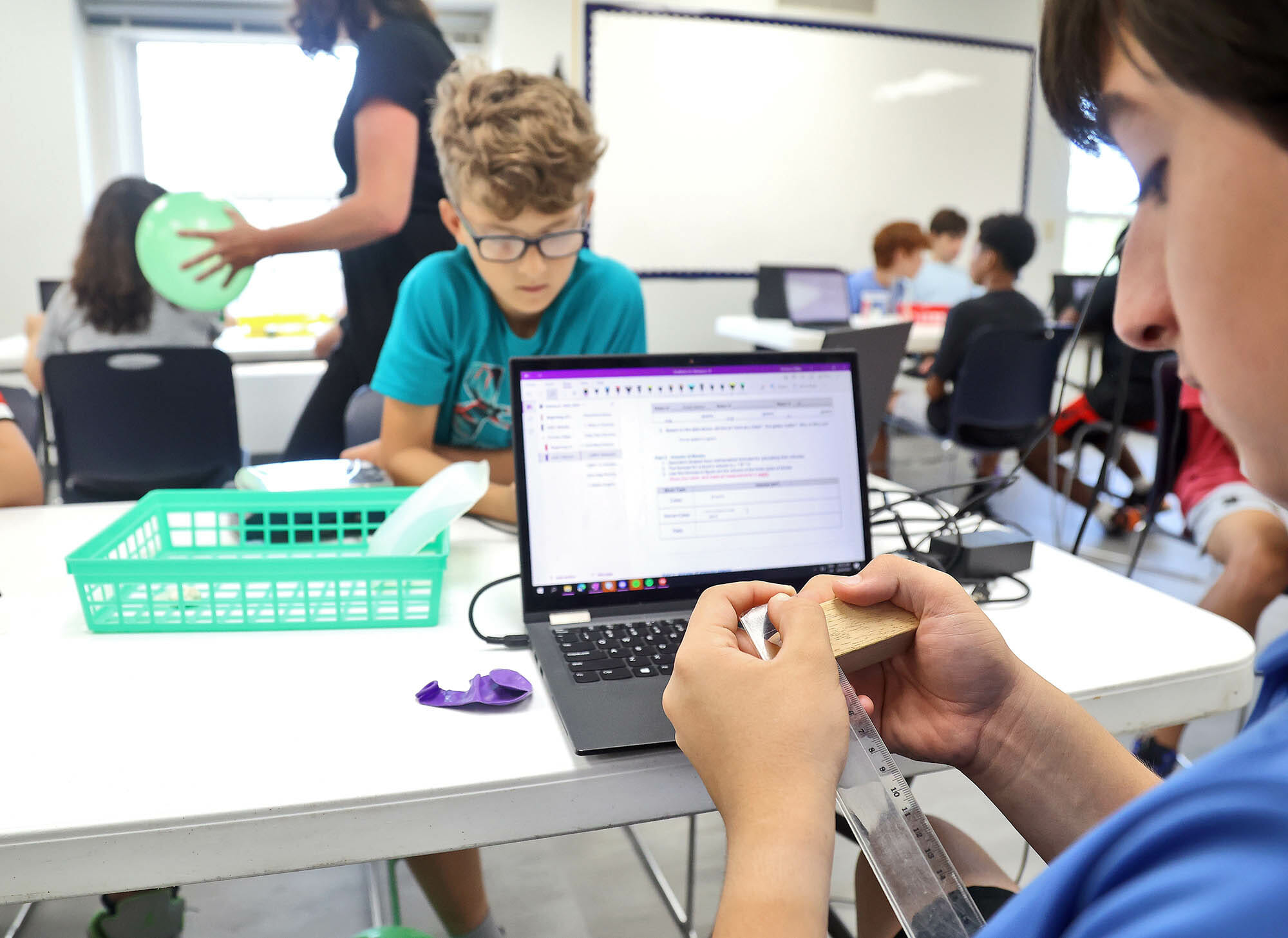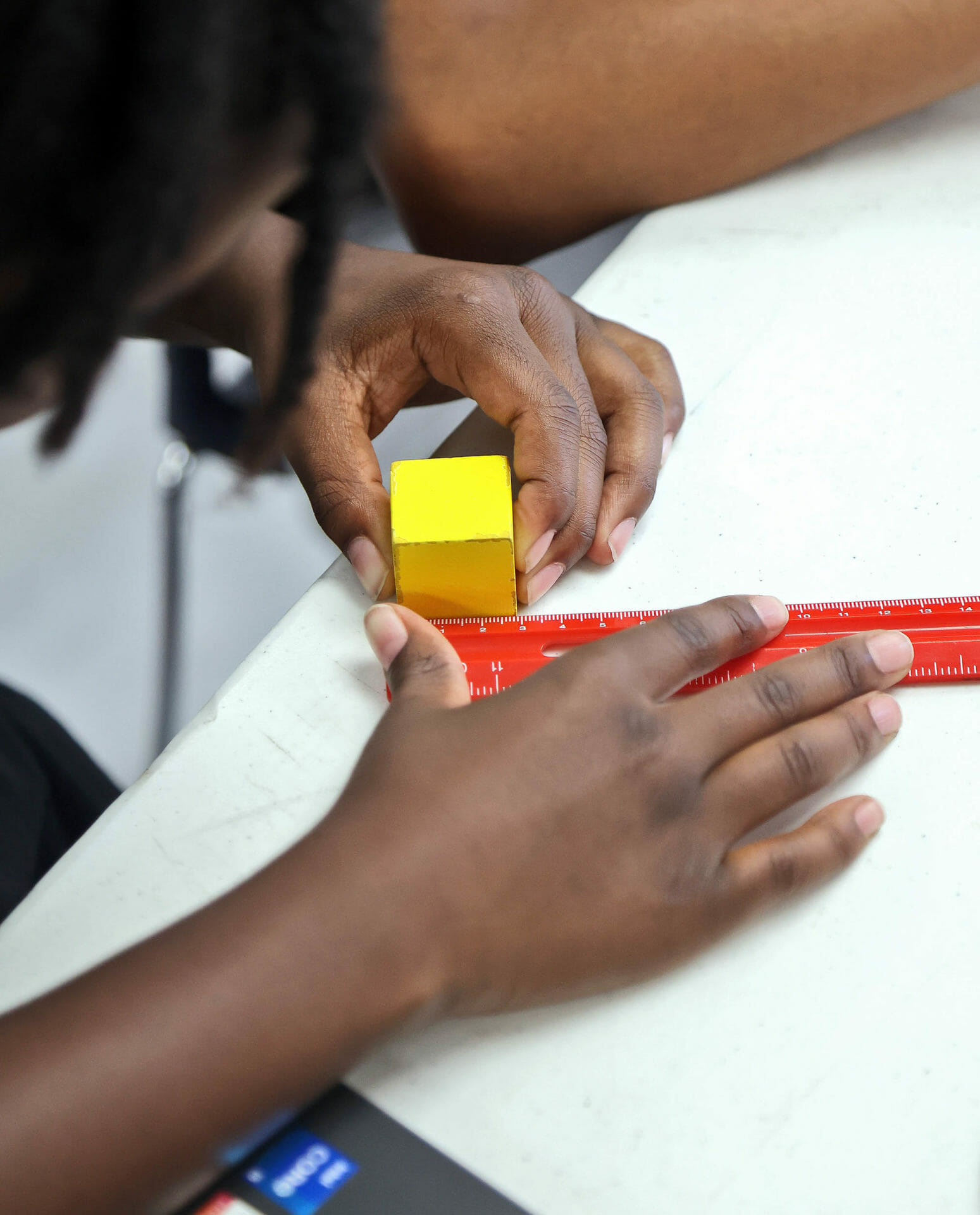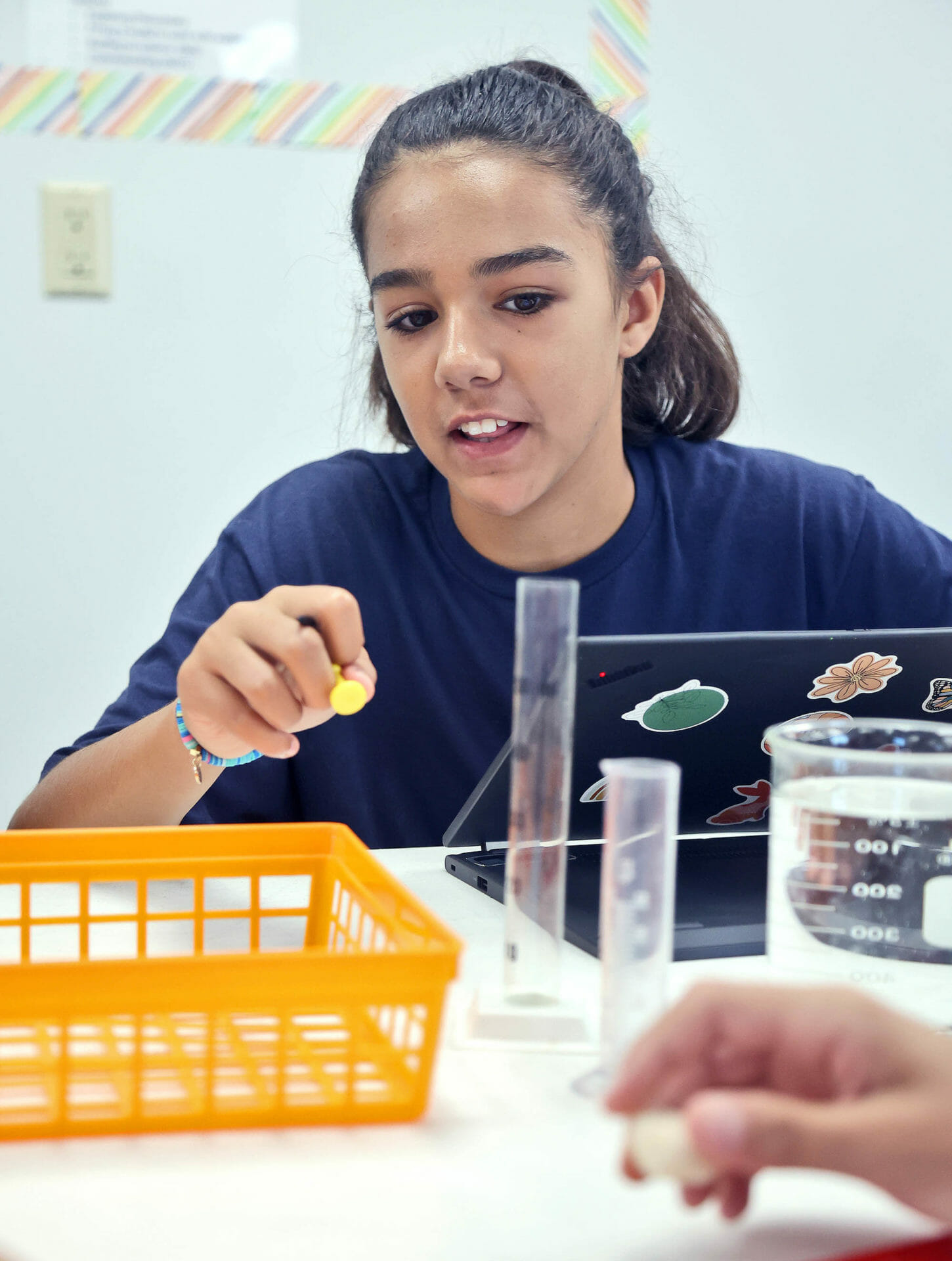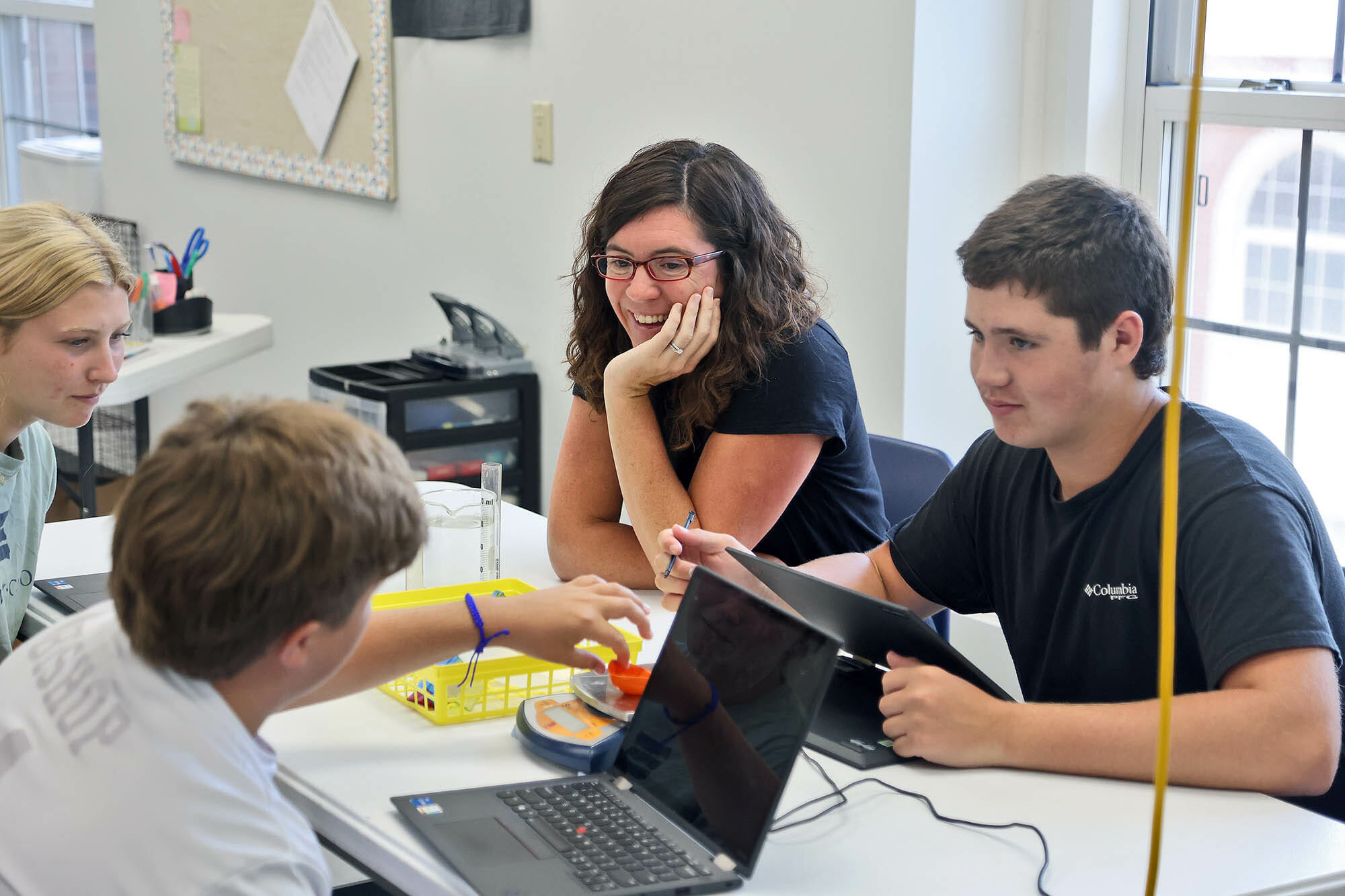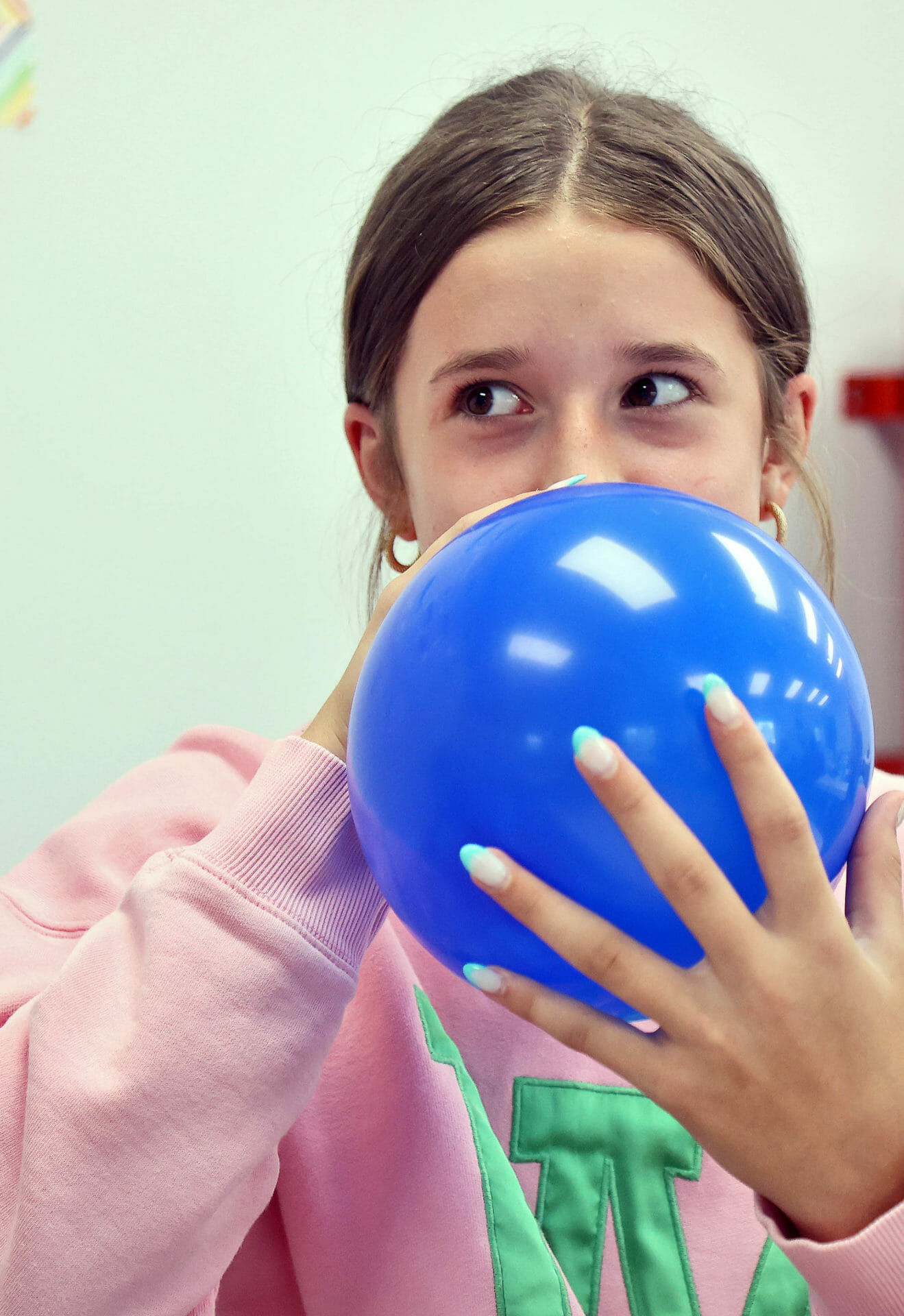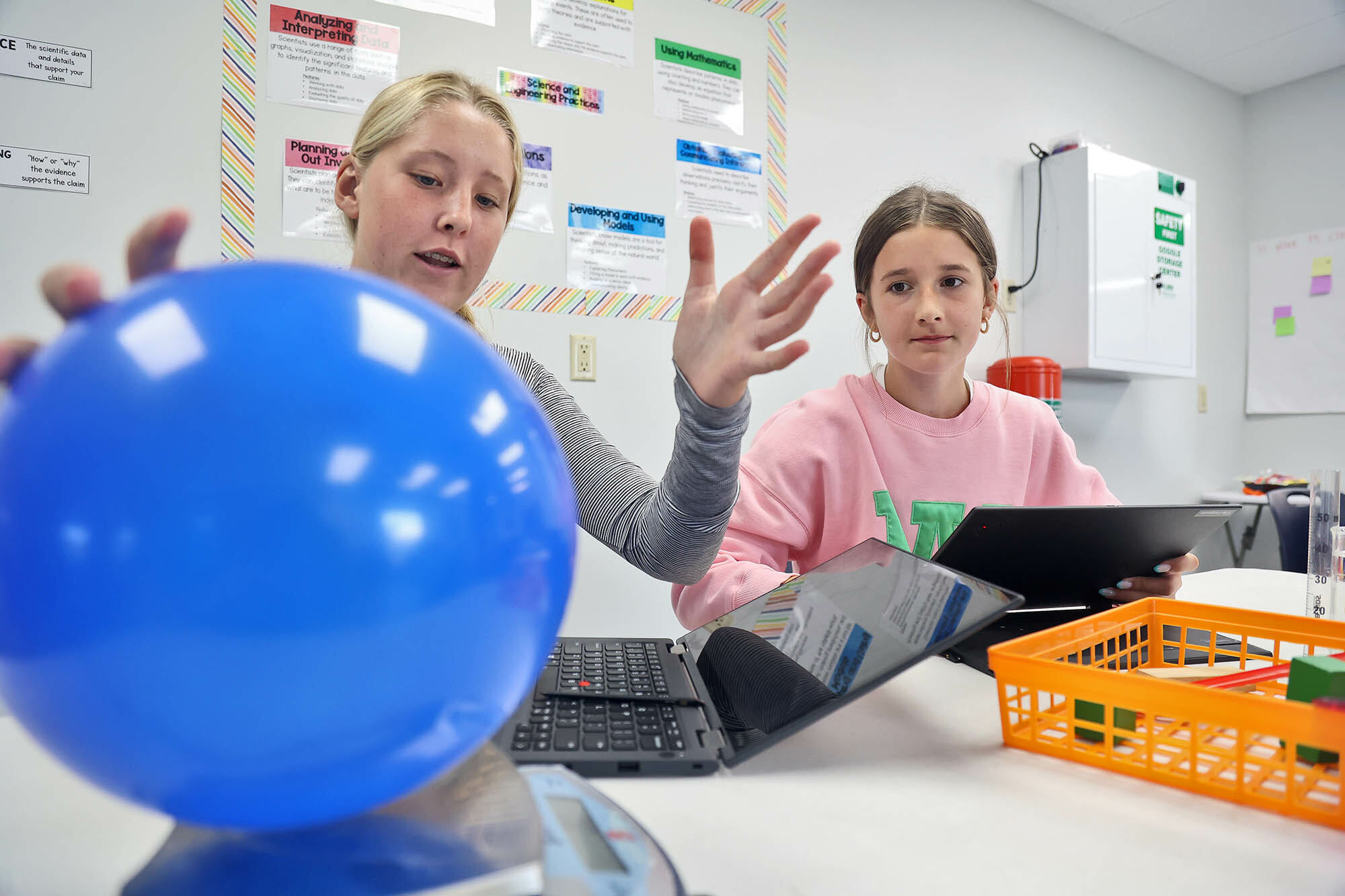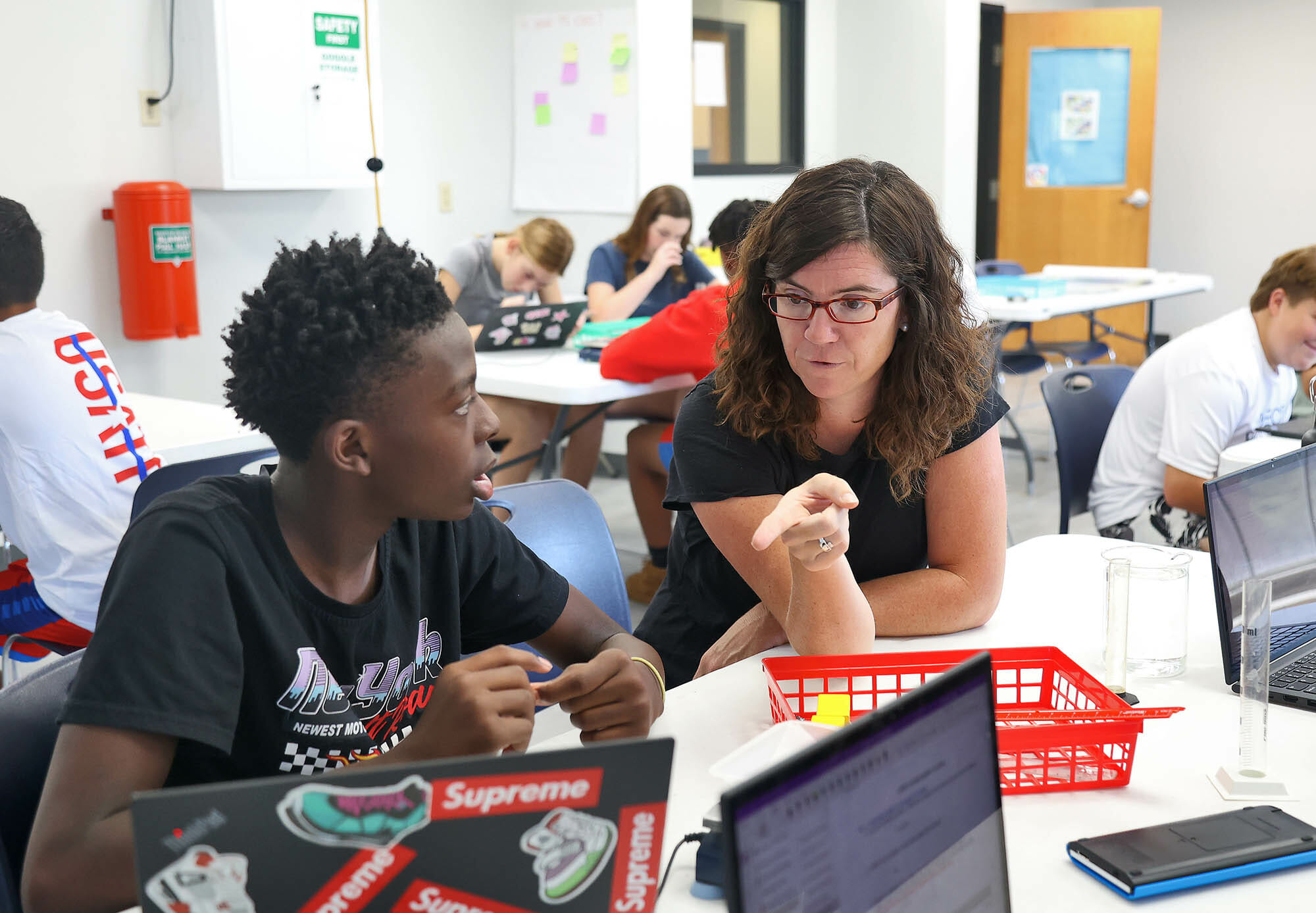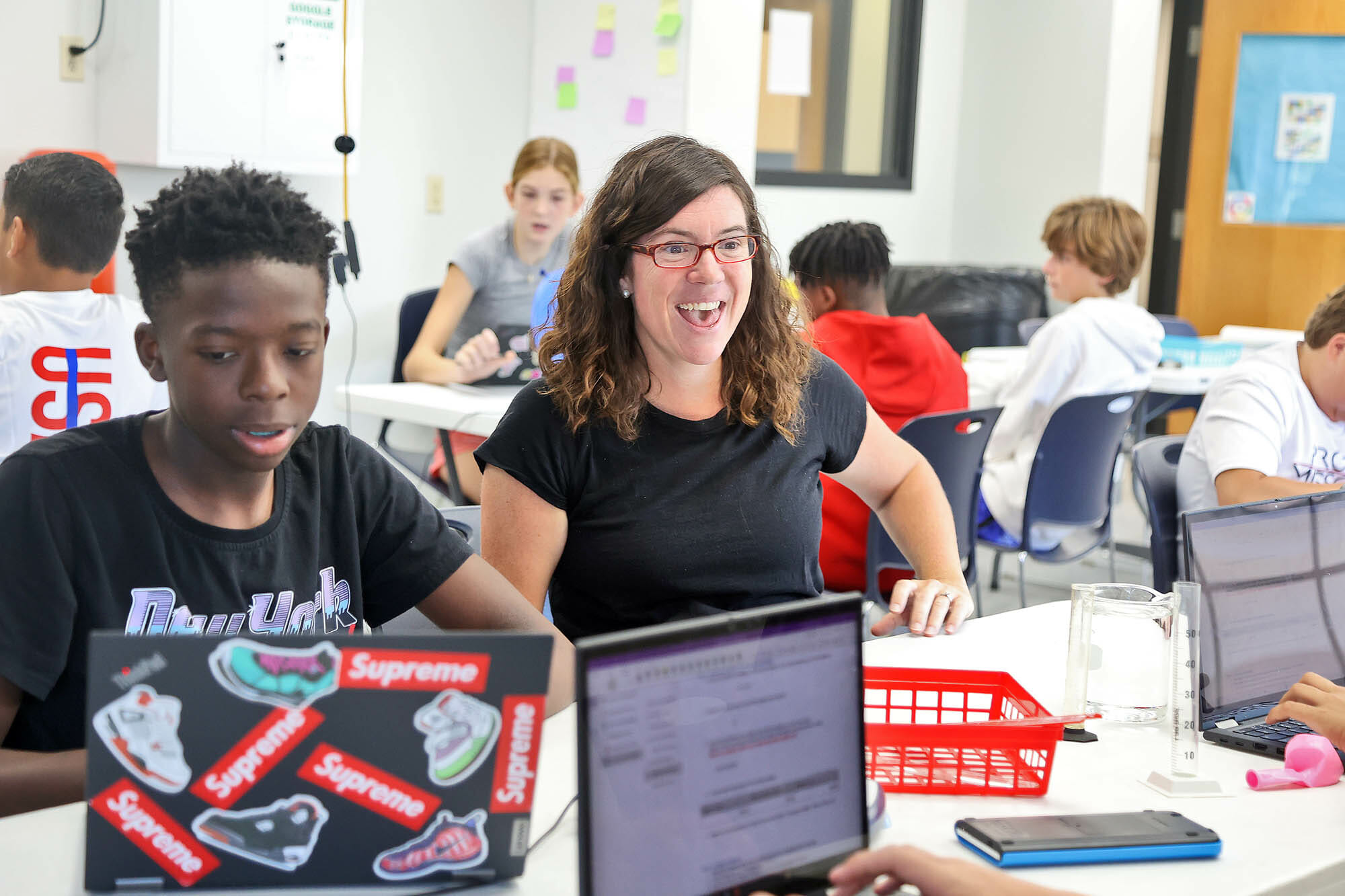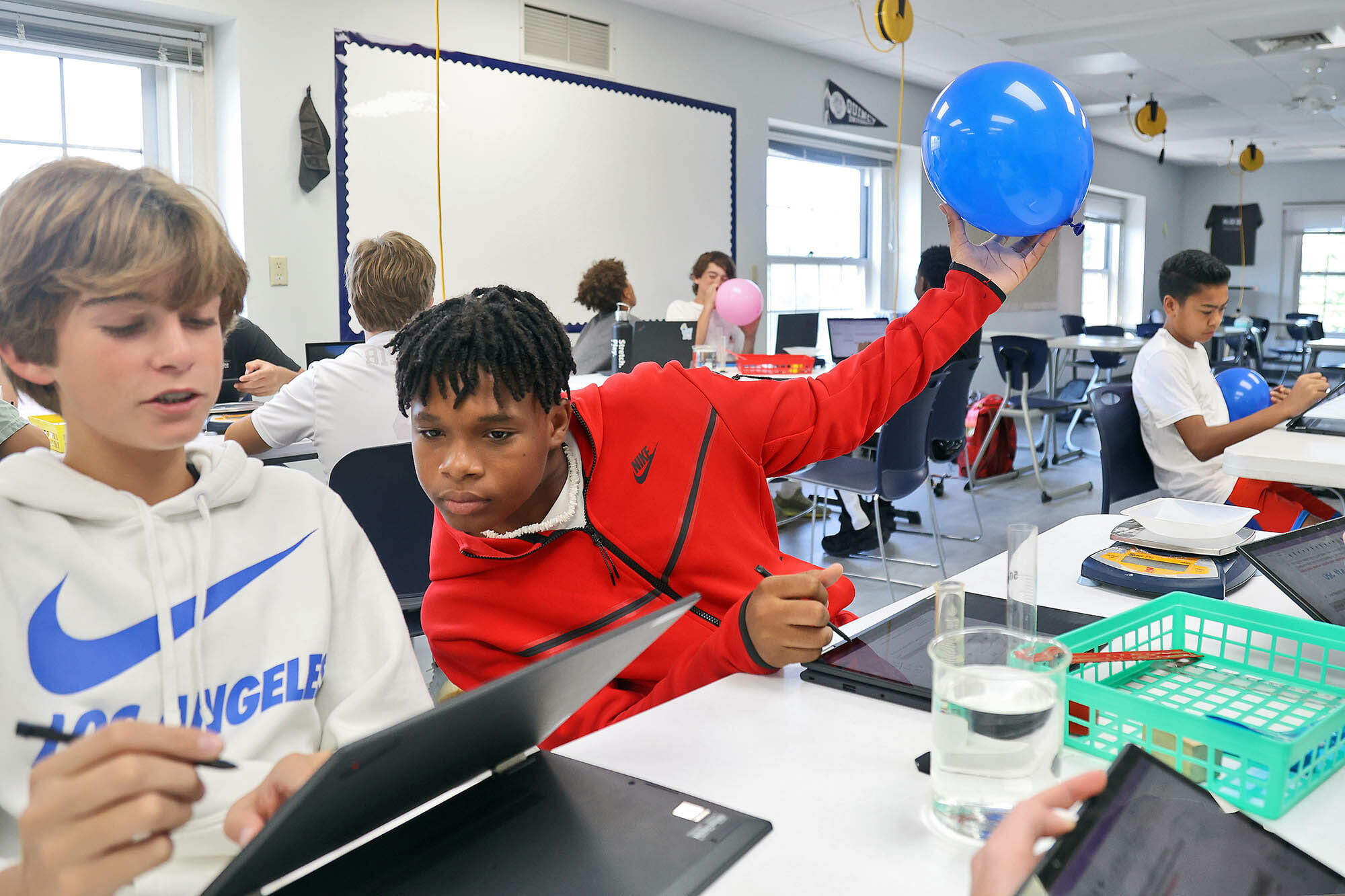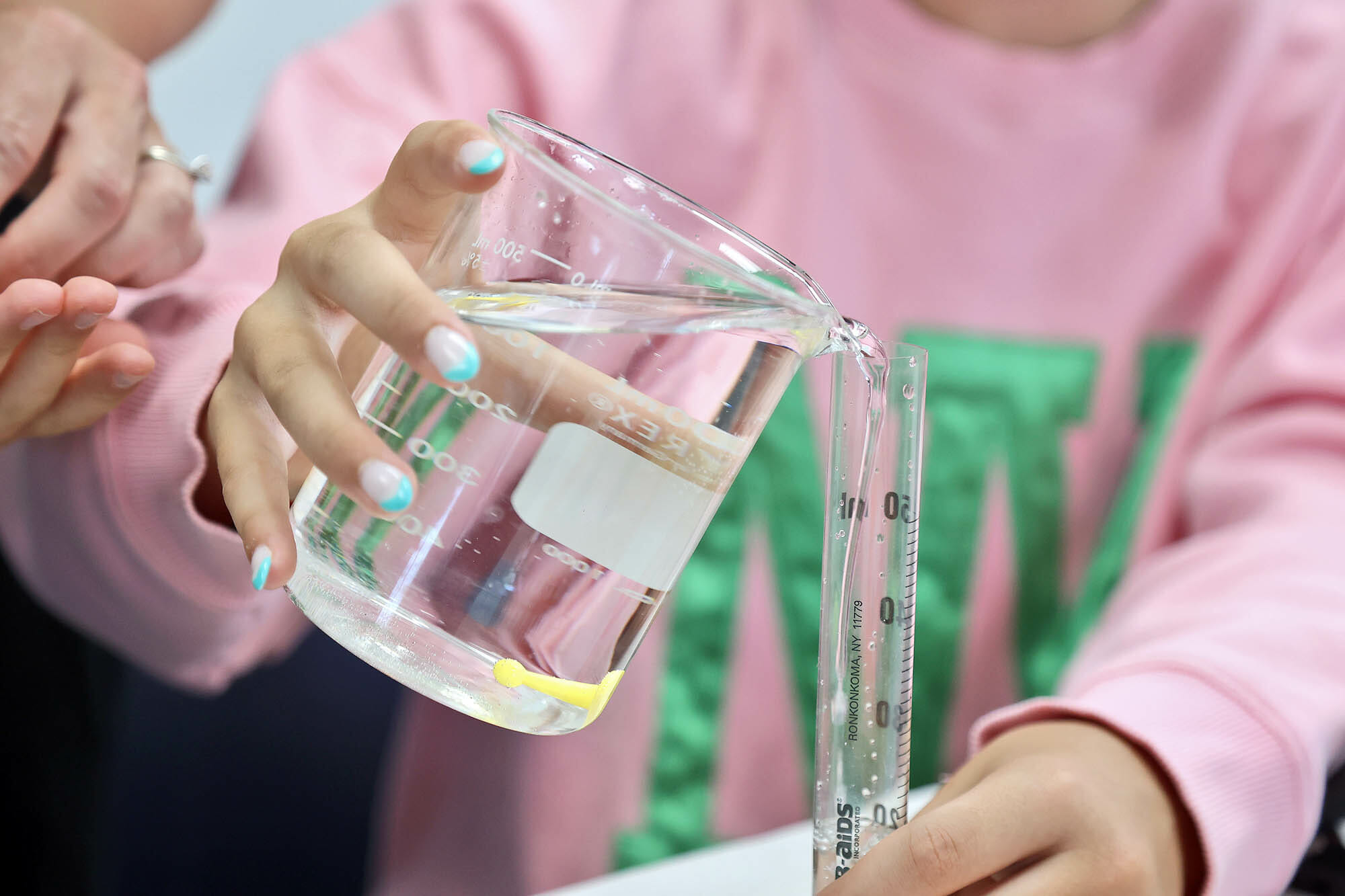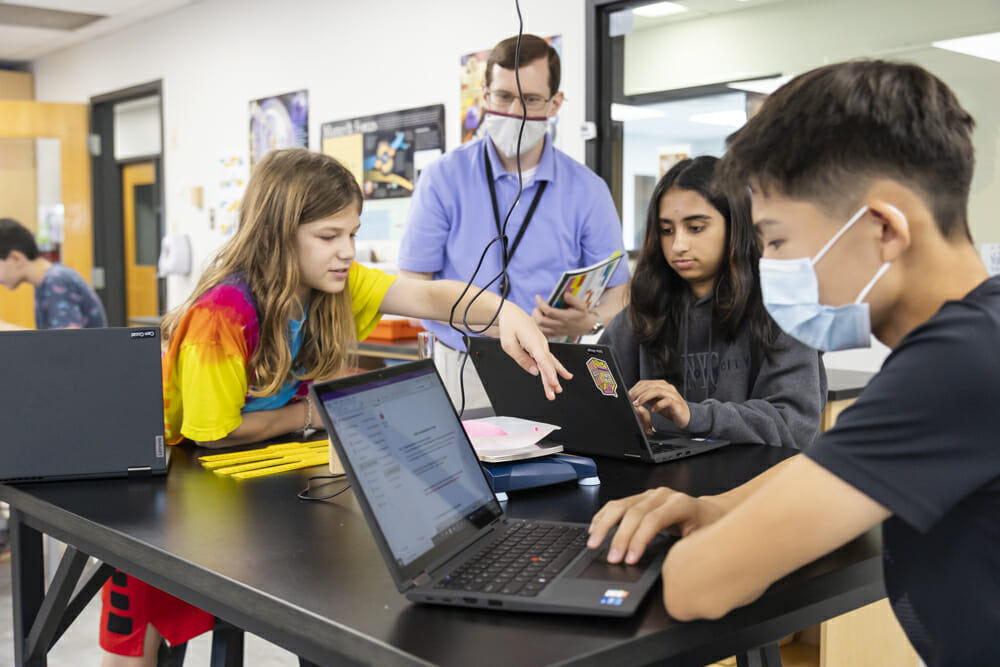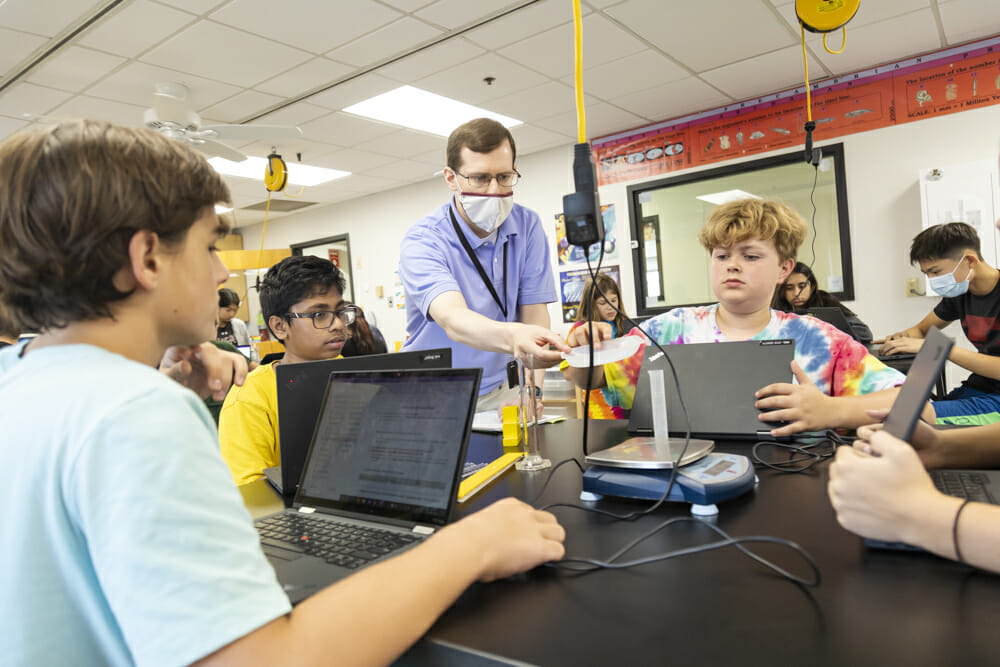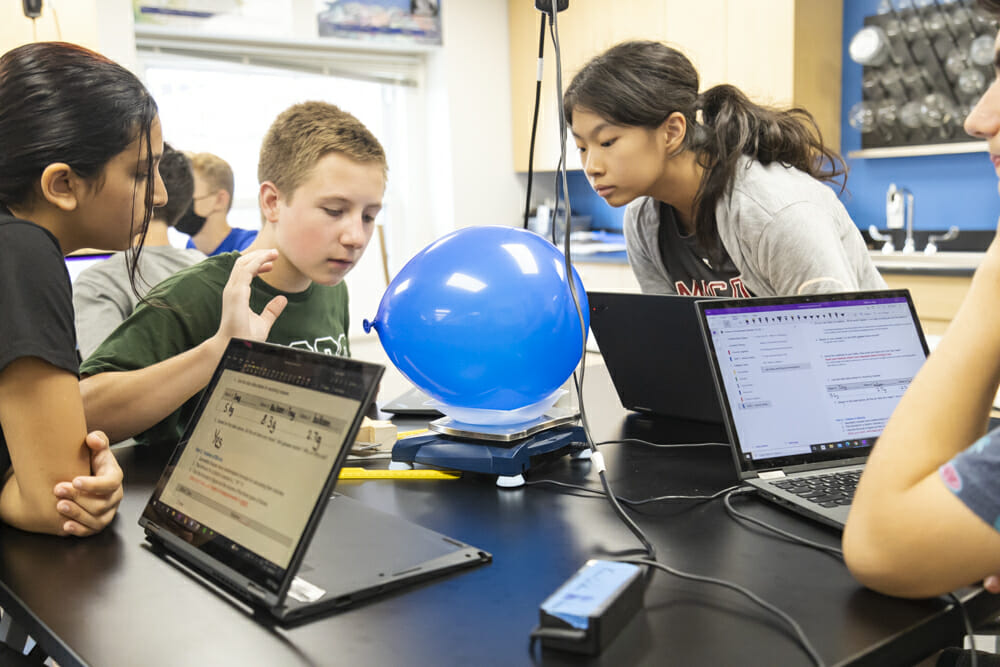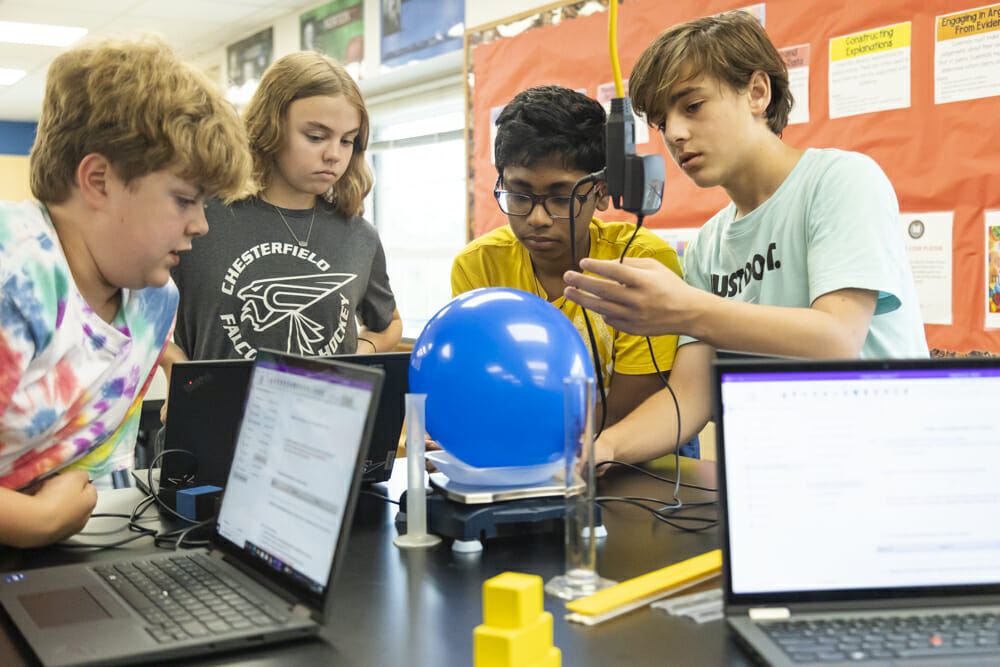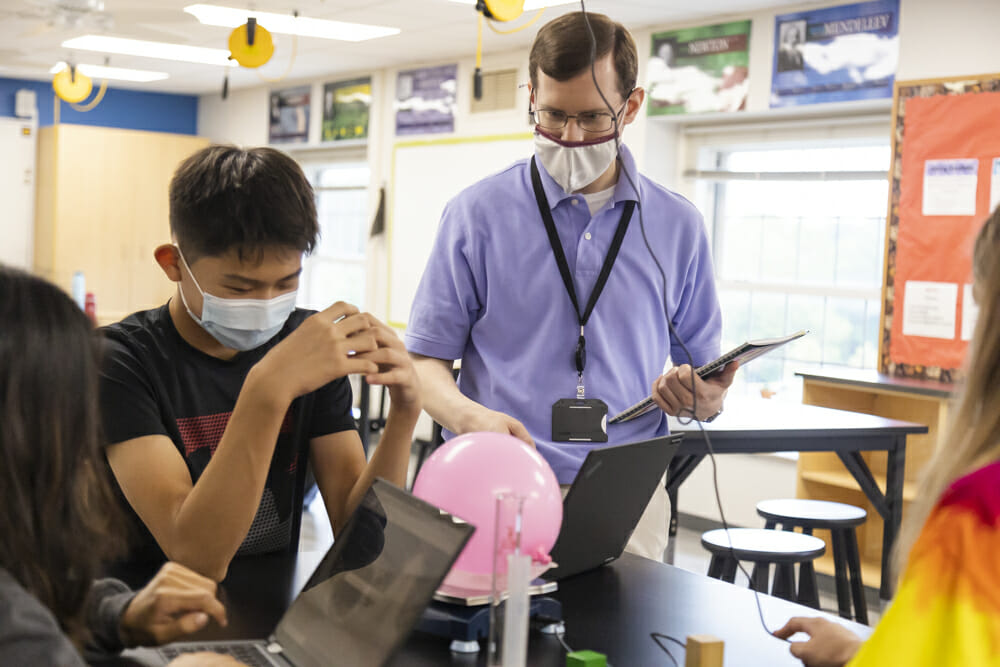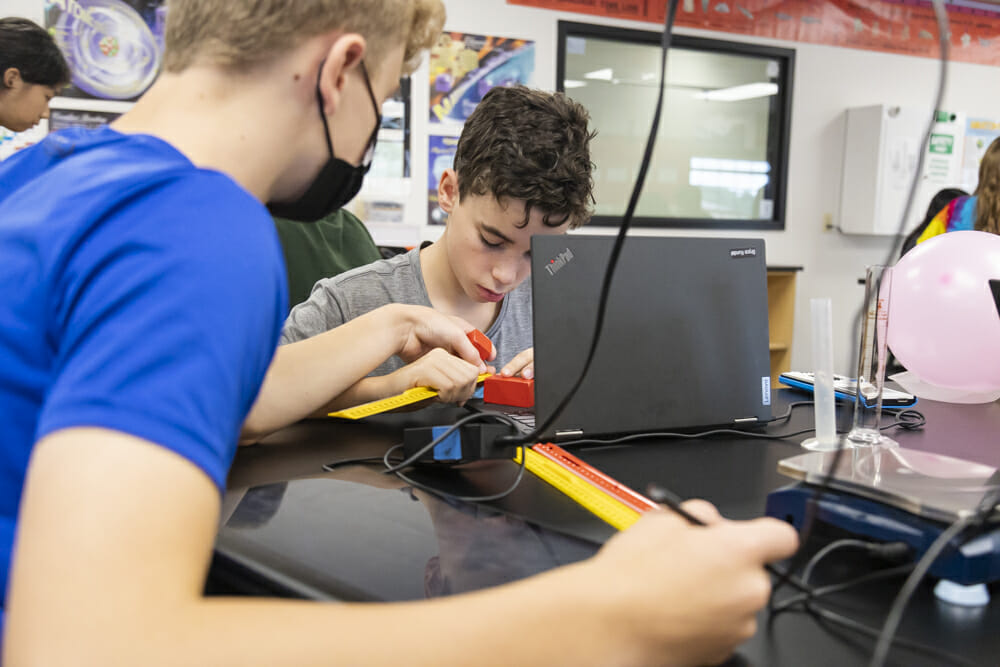It’s the second week of school and eighth-grade students are already very busy with their first science lab of the academic year. This week, they investigated mass and volume in the classrooms of Middle School Science Teachers Callie Bambenek, William Bander, and Michelle Hrastich. With balloons, wooden blocks, and graduated cylinders at the ready, they explored a number of questions and prompts about mass, volume, and matter.
First, using the balloons, the students’ teachers popped a few questions to have the Rams examine whether or not gases are matter. They were asked, « What would happen if you kept pumping air into the balloon? » and, « Do you think gases have volume? » The eighth-grade scientists were tasked with figuring out if air has mass and if gases are matter. Then, they had to use the materials at their tables to figure out the answers. (Spoiler alert— With the aid of the balloons and other objects, the students learned that air does indeed have mass and gases are a state of matter, but they have no fixed volume.) They also calculated the mass for various objects before moving on to study volume.
When investigating volume, students learned that geometric shapes have mathematical formulas for calculating the amount of space an object or substance occupies. By using the main formula for calculating a block’s volume (Length x Width x Height), they got to work figuring out the volume of three different types of blocks. Following this, they used graduated cylinders to calculate the volume of three irregular shapes by seeing how much volume was displaced by fully submerging the irregular objects.
Students found that this lesson really helped them have a deeper understanding of mass and volume. Forest Gong ’27 stated, « I liked this style of learning because it allowed us to be hands-on with everything that we were doing. We were able to conduct the experiments ourselves and see the results. The hands-on experimentation part is what I always like about labs. » The lab really helped paint the picture of what was occurring. « When I’m trying to learn something and I get it wrong, it’s so much easier to see how it really works over just describing it, » shared Grant Baumstark ’27. « Today, one of my classmates was saying that filling a balloon with air would make it lighter, and I disagreed. We got to actually blow up a balloon and find its mass to find out over just someone telling us. » Katherine Schott ’27 agreed saying, « I like this style of learning because it is very hands-on, fun, and easy to understand. » Lola Compton ’27 echoed this sentiment: « The lab was fun and engaging, as we did multiple different experiments to figure out how to identify the substances we were using. »
Besides providing deeper learning, students got to interact with their peers and participate as a group. « I love how the lab is set up to help with collaboration and teamwork, » described Saige Rainwater ’27. « I have struggled with working in a group in the past, but the lab helped me reach beyond my comfort zone and look to my table partners for guidance. The lab work we have done has helped me communicate and collaborate with my team to learn so much more about matter. I really enjoy all of the hands-on work that we have been doing and am so excited for more. I really believe that I am going to love science this year! »
Kate McNeill-Estes ’27 reflected, « I liked today’s lab because it was interactive and we got to communicate with others. » Maahi Saini ’27 loved working with others too. « What I really enjoyed about the lab is the collaboration, » Maahi shared. « It’s so much fun to be able to work with a group of people and learn everything about science. Sometimes one person got something wrong, but the whole group worked together to figure it out. We each took turns, shared ideas, and figured out the solution together—and no one was ever left out. That’s the fun part about labs. »
